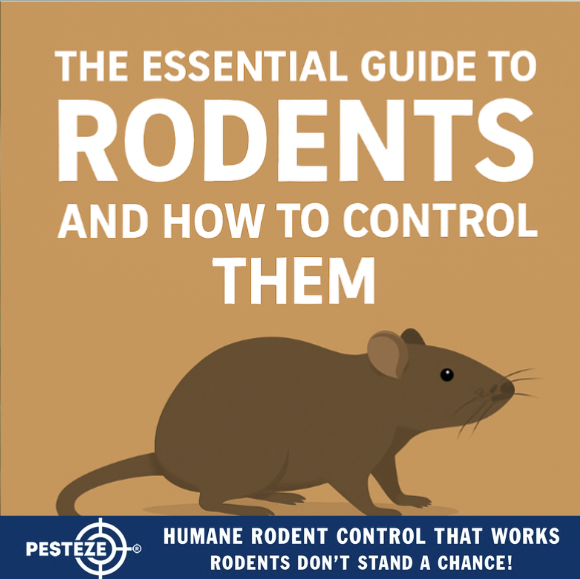THE ESSENTIAL GUIDE TO RODENTS AND HOW TO CONTROL THEM

THE ESSENTIAL GUIDE TO RODENTS AND HOW TO CONTROL THEM
SUMMARY
Rodents pose serious risks to health, safety, and property. From chewing wires to contaminating food, their presence can quickly escalate into costly problems. This guide explores effective strategies to identify, prevent, and control rodent infestations using safe and practical solutions.
FEATURES
-
Identification Made Simple: Learn how to spot common signs of rodent activity.
-
Prevention First: Seal entry points and remove attractants.
-
Sanitation Strategies: Keep food and waste secured to discourage infestations.
-
Natural Deterrents: Use essential oils, plants, and homemade solutions.
-
Trapping Techniques: Effective methods for humane and traditional traps.
-
Professional Help: When to call pest control experts for severe infestations.
GUIDE DESCRIPTION
Rodents such as mice and rats are more than just nuisances—they can cause extensive structural damage, spread dangerous diseases, and contaminate food supplies. Effective control begins with proper identification. Common signs include gnaw marks on wood or wires, droppings in corners, scratching sounds in walls, and nests made from shredded paper or fabric. Recognizing these indicators early allows you to take swift action before a small problem becomes a major infestation.
Prevention is always the first line of defense. Rodents enter homes and businesses through surprisingly small gaps, sometimes as small as a dime. Inspect your property regularly and seal cracks, vents, and holes with steel wool, caulk, or weatherproof materials. Additionally, trimming vegetation around the foundation and keeping outdoor areas free of clutter can reduce the chances of rodents nesting nearby.
Sanitation also plays a key role in rodent control. Store food in airtight containers, clean up spills quickly, and avoid leaving pet food or bird seed accessible overnight. Regularly empty garbage bins and secure them with tight-fitting lids to limit food sources. A clean environment makes your property far less attractive to rodents.
For those who prefer eco-friendly options, natural deterrents can be very effective. Peppermint oil, cayenne pepper, and garlic are powerful rodent repellents that can be applied in high-risk areas. Rodent-repelling plants like lavender, mint, and marigolds also provide a natural layer of protection around homes and gardens.
Trapping remains one of the most practical ways to remove rodents once they’ve entered your space. Traditional snap traps, glue traps, or live traps can be effective depending on the severity of the infestation and your personal preference. Always check traps frequently and dispose of rodents safely to avoid secondary contamination.
Sometimes infestations become too severe for DIY solutions. In such cases, it’s best to contact professional pest control services. Experts can provide tailored strategies, advanced traps, and safe treatments that not only remove rodents but also prevent them from returning.
By combining prevention, sanitation, natural repellents, and trapping, homeowners and business owners can create a comprehensive rodent control plan. Taking proactive steps today helps protect property, maintain hygiene, and safeguard health for the long term.
- Aahna Barma


Comments 0